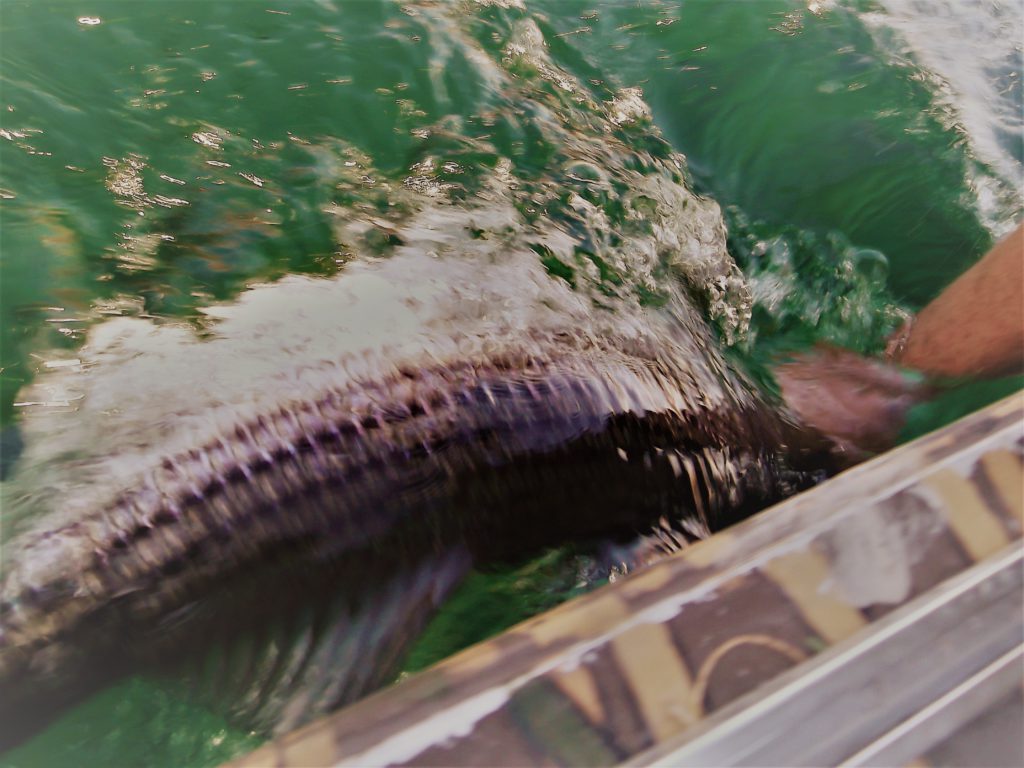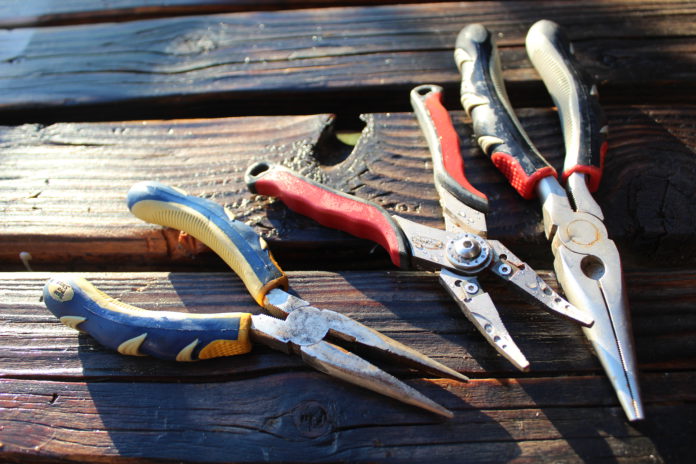BY GUNDY GUNDERSON
Because most southern California boat fisherman release many more fish then they keep, possessing the skills of releasing a fish properly is important. Releasing a fish insures the future of the fishery. If it is done properly, the mortality rate is low. The goal is to reduce the trauma of the fish as much as is possible. This is achieved by turning the fish around from the landing to the release as quickly and as efficiently as possible. As an angler, and boatsman, having the proper tools, in good working order, convenient and close at hand is essential to a clean and quick release of a fish. Here are some of the essential tools to execute that successful release.
Net
The most foolproof way to land a fish although I’ve seen it botched plenty of times. A sturdy handle and a large wide-gapped mouth with rubber-coated netting is the best design. Avoid cheap cotton and polypro nets that splay and damage the fish’s tail fins and strips the protective slime inviting infection. Rubber coated nets are must less damaging. The size and depth of the net should be dictated by the range of sizes of species you intend to land. Its far better to have a larger net than a smaller one.
The length of the handle should be determined by where you might land a fish. A small skiff fisherman would prefer a standard-size handle, a small boat fisherman, a mid-length handle and a big boat fisherman a longer handle. How and where the net will be stowed will also influence size. Telescoping nets make for larger yet more compact nets.
Important in utilizing the net is the technique. It involves both the angler and the net man. Both working together is the key to success. The angler should lead the fish toward the net, keeping the fish’s head below the surface of the water. Many species will explode once they break the surface. A good net man will not jab at the fish. He will place the net in the path of the fish and dip the bar enough to allow the fish’s momentum to lead it into the net. There should be no net motion toward the fish. Let the fish do the work. Once the fish is over the bar, level the net and lift straight up.
Many anglers do not like to bother with nets but they are often the cleanest and most consistent way to catch and release a fish. The chance of losing a fish at landing is diminished and the process is much less traumatic on the fish. It is much cleaner than a fish struggling to be held, badly overhandled or flopping on the deck. Long drawn out landings are hard on most fish and the mortality rate rises precipitously.
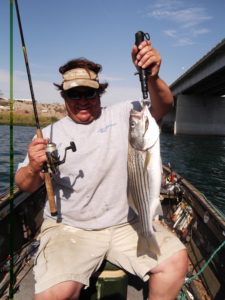
Boga grip
This is a great invention. Just about anyone can land and release a fish with this handy tool. A pincer jaw clamps on to the lip, locks down and secures the fish. It is nearly fool proof. Once the hook is removed, there is a built-in scale so the process of subduing the fish and weighing it is one. After a photo, the fish can be laid back down into the water and the pincer jaw released. The system works very well.
The tool is not cheap but the original is of high quality and built for years of use. Avoid the cheap Chinese knockoffs that are poorly constructed with inaccurate scales. Don’t skimp on important tools. Because they are expensive, many experienced anglers rig it with a cork float. If it goes overboard, it won’t be lost.
With a Boga grip, the fish are released in excellent shape. The great advantage is that the fish’s protective slime is untouched. However, be careful with larger fish. Avoid hanging the fish to long as the weight of the fish can damage the jaw.
Gaff
A gaff doesn’t seem like a release tool but it often is. A mouth gaff is an important way to subdue a bigger fish. It is a learned technique that takes a little experience, but it is often the only way to get the job done. Usually a mid-sized hook works best. Keep the hook points sharp so as to do the least damage. Carefully slip the gaff point through the thinner membrane near the corner or bottom of the fish’s mouth usually from the inside out. Slowly lift the weight of the fish. Once the hook is secure and the fish subdued, then you can grab the fish by other means or quickly photograph it and release it. If there is a lure in the oral cavity of a mouth-gaffed fish then you can pull the hooks with a big needle nose. If it is a shark, another gaff can be used to pop the lure’s hooks free.
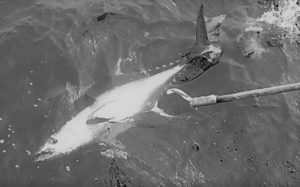
Release pole
A more specific needs tool. Usually required for releasing larger fish that can’t be landed safely in terms of the angler or for the fish. Large bluefin, yellowfin and sharks are typical candidates.
Measuring device
A sticker with the measurements of legal size fish is most convenient. Place it on the gunwale, bait tank or transom where it is handy and accessible. The advantage is that it is right there, quick and easy, hold the fish against it and you’re done. Additionally, you don’t have to worry about another item on the deck. Measuring sticks with size limit marks also work well but you have to stow it in a place on deck that is out of the way yet easily accessible. Digging around for a measuring device with a fish flopping around is not cool.
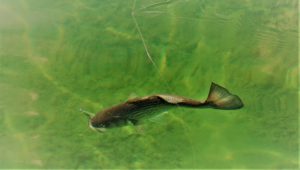
Needle nose pliers
One of the most important release tools on the boat. Indispensable in pulling a hook. Invest in a good pair and regularly maintain them. I like a standard size one, a large one and I have a long nose long handle pair that is useful in certain situations like a deep hook or a larger fish. Include them in your, every trip, boat maintenance. Squeegee the windows then rinse, dry and oil the needle nose. Everyone knows the frustration of grabbing the needle nose to pull a hook in a rambunctious fish and the tool is a locked up rust bucket… no good. When you pick out a pair, better a little loose than a little tight. A holster or sheath with the needle nose and the side-cutters placed close to the landing zone will put the tools at a consistent, go-to spot. You never want to scrounge around for them.
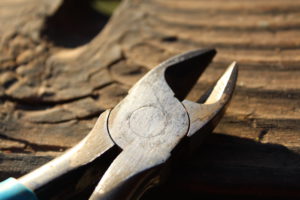
Side cutters
Also, a very important deck tool. Often used to cut away wrapped lines when attempting to land a fish or cutting leader short when releasing a dangerous fish like a shark or big ray. Invest in a good pair. Look for quality. As with needle nose, I like 50-year-old American-made models I find at yard sales. The quality is there. And if you lose them, easy come, easy go. Avoid the deluge of crappy Chinese models even if they are marketed by fishing tackle companies. They don’t last. Three tries at cutting a piece of mono sucks. Like the needle nose, keep the pliers rinsed, and oiled for optimum performance.
Scale
If you’re going to release a fish you want to have an accurate weight. I prefer a classic spring scale because I have been let down too many times by digital scales of varying costs and quality. They are cheaply constructed and most just don’t hold up. And they always let you down at the worst possible moment, usually when you have a trophy fish at the boat. Like anything else, be sure to maintain the spring scale. Have the scale handy so you can weigh, photograph and release the fish quickly.
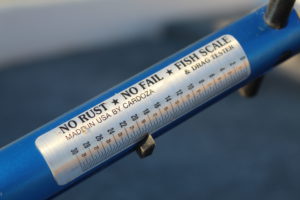
Camera
Not necessarily a release tool but crucial to show the folks the big fish you released. Have the camera handy and photograph as quick as possible. The less time the fish are out of the water, the better the chances of a successful release. For best results, make sure the fish is perpendicular to the angle of the shot and fill the frame. I say camera because if you want to enlarge and print a photo, the quality of an inexpensive 16 mega-pixel point and shoot is superior to a camera phone. You like to give yourself the option when posing with a trophy fish. You may also want a sacrificial dedicated boat camera because the harsh environment on the deck of a boat can be detrimental to the health of your smart phone.
Sash weight
This is my preferred way to release a fish caught deep with an inflated bladder. Turn a big 12/0 hook upside down. File off the barb. Tie the main line to the bend in the hook. Tie the sash weight to the eye of the hook. Heavy dropper loop sinkers will suffice. Place the point of the hook on the outside of the top of the fish’s mouth. Place the rig in the water and free spool the reel. Thumb the reel, letting the sash weight steadily draw the fish down by the upper lip. When the rig and fish reach the bottom, put the reel in gear, wind tight and jab the rod upward. The action will pull free the hook point leaving the fish back at the bottom equalizing the bladders. Wind the rig back up. Ideal for rockfish or black sea bass caught in deeper water. Better than the old needle in the bladder technique.
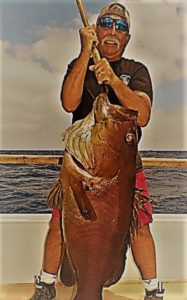
Cradle
Another specialized tool but effective at releasing larger species. Configured like a canvas stretcher. The fish is lead over the canvas portion of the cradle then the poles are lifted from the water cradling the fish. They are popular with fresh water muskie fisherman but can crossover to used effectively with saltwater species.
The goal of releasing a fish is to ensure that the fishery is preserved. This is achieved by making the whole process quick and efficient. Having the right tools at the right place upon the landing of the fish is pivotal to the success of this process.
